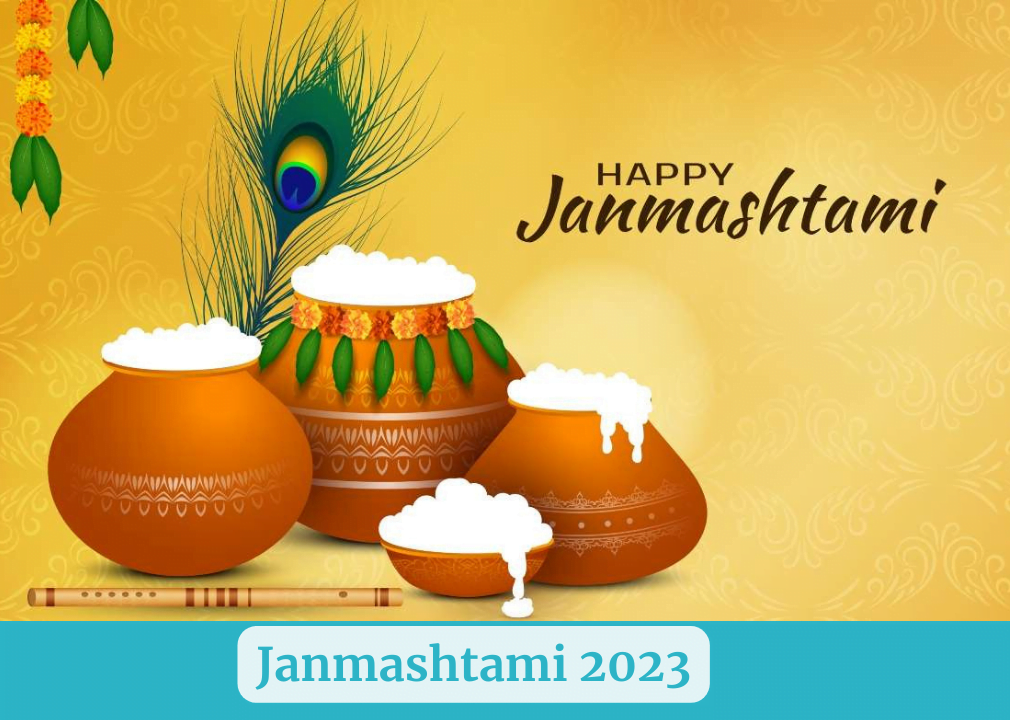Janmashtami 2023: To honor the birth of Lord Krishna, Janmashtami, also referred to as Krishna Janmashtami, Gokulashtami, Shri Krishna Jayanti, and Krishnashtami, is observed nationwide. This day is celebrated as Lord Krishna’s birthday in the Hindu calendar since he was Lord Vishnu’s eighth incarnation. In the Bhadrapada month, it occurs on the eighth day of the Krishna Paksha (dark fortnight). According to the Drik Panchang, Janmashtami will be observed this year on two consecutive days. Both days of the festival are set aside for the Ashtami Tithi, which starts on September 6 at 15:37 (3:37 PM) and ends on September 7 at 16:14 (4:14 PM).

In the middle of the night on this auspicious day, devotees assemble at Krishna temples to make prayers. Beautiful flowers and brilliant lighting adorn temples. Even though this day is observed all across the world, Mathura and Vrindavan have unique significance because they are closely linked to the conception and early years of Lord Krishna. Temples are embellished with ornaments, beautifully illuminated lamps, and vibrant flowers. Scroll down to find out why Janmashtami is so revered in Mathura and Vrindavan.
In Mathura and Vrindavan, how is Janmashtami Observed?
The 10 days leading up to Janmashtami are filled with cultural and religious activities including Ras Leela, bhajans (devotional songs), kirtans (hymns), and talks. The life and love of Lord Krishna, Radha, and various gopis (milkmaids) are dramatized in the Ras Leela. This is performed in a variety of venues in Mathura and Vrindavan by both professional performers and neighborhood worshippers.
During the early morning hours of Janmashtami, devotees visit Krishna temples, particularly the Banke Bihari Temple in Vrindavan and the Krishna Janmabhoomi Temple in Mathura, where Lord Krishna is thought to have been born. These temples have beautiful flowers and brilliant lighting to add to their allure.
Midnight marks the precise time of Krishna’s birth, and an elaborate ceremony called “Abhishek” is performed. A Krishna deity is bathed in milk, yogurt, honey, ghee, and water during this ritual. While the deity is being washed, conch shells, bells, and Vedic hymns are recited. Then, as a sign of their love and devotion, worshippers present Krishna with 56 different dishes known as “Chhappan Bhog.” After that, the devotees receive the prasad (blessed food).

Another key event of the Janmashtami celebrations in Mathura and Vrindavan is the “Dahi Handi” program, which was motivated by Lord Krishna’s mischievous youthful pranks. In this game, teams of young men construct human pyramids in order to scale a high-hanging pot of yogurt or butter and break it. It calls for boldness, bravery on display, and teamwork. Usually, a sizable crowd comes to applaud and take in this show.
The day after Janmashtami is referred to as “Nandotsav,” in remembrance of the happy occasion when Nand Baba, Krishna’s foster father, gave presents and sweets to everyone in Gokul (Krishna’s village) to commemorate his birth. Devotees travel to Nandgaon, the location of Nand Baba’s birth, on this day to pray and give to the less fortunate. To honor Krishna’s playful character, numerous cultural activities and contests are arranged.

A genuine once-in-a-lifetime experience, Janmashtami celebrations in Mathura and Vrindavan. Even though more pilgrims visit these sacred sites every year, it is still essential to plan your journey ahead of time and book secure accommodations.
What Causes Hindus to Celebrate Janmashtami?
Hindus enthusiastically and joyfully celebrate Janmashtami because it represents the birth of Lord Krishna. Despite the fact that it is observed differently in each state, Mathura and Vrindavan are particularly significant since Mathura is thought to be the location of Lord Krishna’s birth and Vrindavan is where he spent his formative years. To obtain blessings and experience divine presence, devotees offer prayers and go to local Krishna temples.
When it comes to Lord Krishna:
King Kansa devised a plan to murder Devaki’s children after learning that his sister’s offspring would bring about his ruin. Vasudeva (Devaki’s husband), in order to safeguard the newborn Lord Krishna, surreptitiously transported him to Gokul. Lord Krishna was raised by Nand and Yashoda as if he were their own child, and he rose to fame and popularity. According to legend, Lord Krishna fought his maternal uncle Kansa to uphold justice.


Your point of view caught my eye and was very interesting. Thanks. I have a question for you.
I don’t think the title of your article matches the content lol. Just kidding, mainly because I had some doubts after reading the article.
I don’t think the title of your article matches the content lol. Just kidding, mainly because I had some doubts after reading the article.
Thank you for your sharing. I am worried that I lack creative ideas. It is your article that makes me full of hope. Thank you. But, I have a question, can you help me?
Thanks for sharing. I read many of your blog posts, cool, your blog is very good.